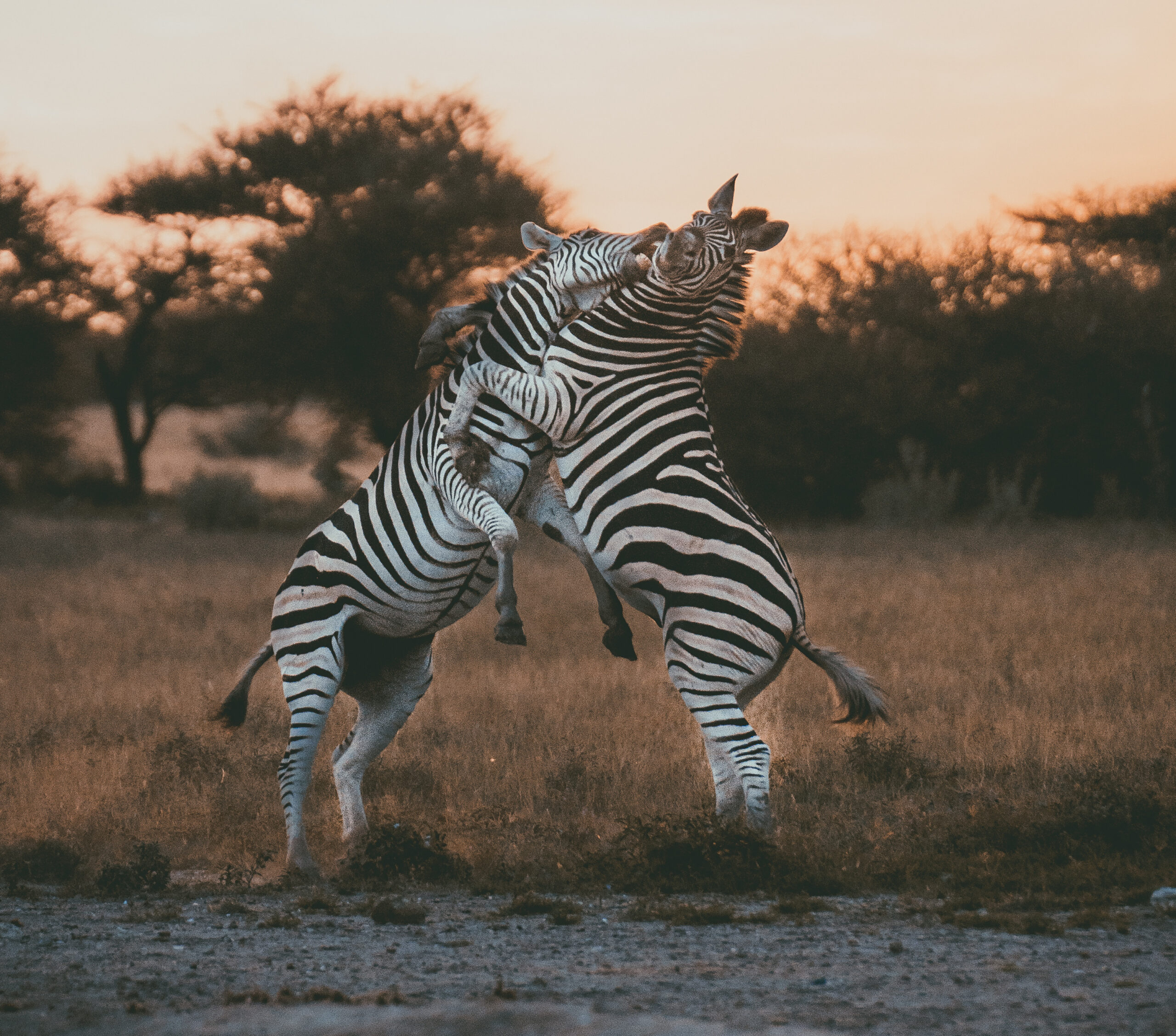Follow The Zebra Migration in Northern Botswana at Migration Expeditions Camp from African Bush Camps
Authentic safari camp in the heart of the action of the longest animal migration in Africa, with comfortable tented accommodations, meals, and daily game drives through Nxai Pan National Park
There are only so many places to witness Zebra on the move in Africa, and the annual migration of the eye-catching equine in northern Botswana tops them all. Travelers seeking superb views, comfortable accommodations, and the thrill of being on safari as Zebra make their determined search for sweet and nutritious grasses will find much to discover, experience and enjoy at Migration Expeditions, an intimate safari destination from African Bush Camps (ABC) amid the wilds of Nxai Pan National Park.
The annual November-to-March migration of Zebra in northern Botswana is the longest and one of the most stunning migrations on the Continent, stretching 311 miles from the Chobe River Floodplains to the grassy plains of the Nxai Pan and back again. Attracting wildlife watchers from all over the world, the migration proceeds in three massive movements one way and three movements back. The distinctively black-and-white-striped Zebra know just where to go, spurred by heredity to follow the same migration patterns as those before them, occasionally with adaptations to get around impediments such as buffalo fences. The three movements include:

- Chobe Enclave – Linyanti Reserve – Savuti Marsh (November-December) – With the start of the migration dependent on rains, Zebra follow grasses from the moist floodplains of the Chobe River, passing villages on the outskirts of the Chobe Enclave as they make their way to desert through marsh and plains to dry, mopane woodlands, and finally across a large stretch of the deep Kalahari Sandveld, dotted with water holes.
- Savuti Marsh – Mababe Depression (end of December-January) – Here the herd heads to Savuit and the hardest part of the journey towards the desert. A permanent waterhole at the end of the Savuti River has pod-bearing trees necessary for the migration, helping the Zebra and other species subsidize their diet in the absence of other food sources. The Zebra then continue south to natural waterholes and additional water points along the way.
- Mababe Depression – Nxai Pan – Makgadikgadi (end of January-February) – Sweet grasses reward Zebra after their long and arduous journey, as they settle in for two months, often dropping their calves in the wet season or holding off for as long as four weeks, depending on the weather.

Migration Viewing and More
The local team and ABC-trained guides at Migration Expeditions Camp coordinate programming with myriad opportunities for travelers to see and experience the mesmerizing Zebra migration and other wildlife beyond. Daily activities include morning and afternoon game drives in Nxai Pan, known as home to Kalahari lion with dark manes, herds of large bull elephants, plus wildebeest, giraffe, oryx, springbok, steenbok, cheetah, jackal, spotted hyena, and rare leopard, wild dog, and brown hyena. If all that weren’t enough, Nxai Pan is a highly desirable setting for bird watching, with more than 200 bird species, many at their liveliest during the Zebra migration.
Travelers at Migration Expeditions Camp also enjoy visits to Baine’s Baobabs, a cluster of baobab trees on an island overlooking KudiaKam Pan. It’s a sight to behold, perfect for an immersive connection with a loved one, family, and friends.
In keeping with ABC’s commitment to innovative conservation, the eco-sensitive design of Migration Expeditions Camp facilitates a seamless flow between the surrounding pristine desert environment and the camp. There are four Meru-style canvas tents onsite offering space for up to two guests per tent. Each accommodation is elevated on a low deck and accessorized with double or twin bedding, comfortable indoor/outdoor chairs, a shaded patio space attached to the tent, as well as an en suite bathroom with a chemical toilet and a bucket shower.
Solar-powered stations offer ready recharging for cameras and other technologies. The main area of the camp is arrayed with two canvas-covered hubs, with a cozy lounge area on one side and a dining area with open kitchen on the other. At the heart of the camp, travelers can gather at the fire circle to swap stories of their adventures on safari and learn of the wildlife, community, and authentic culture around them from their ABC guides.